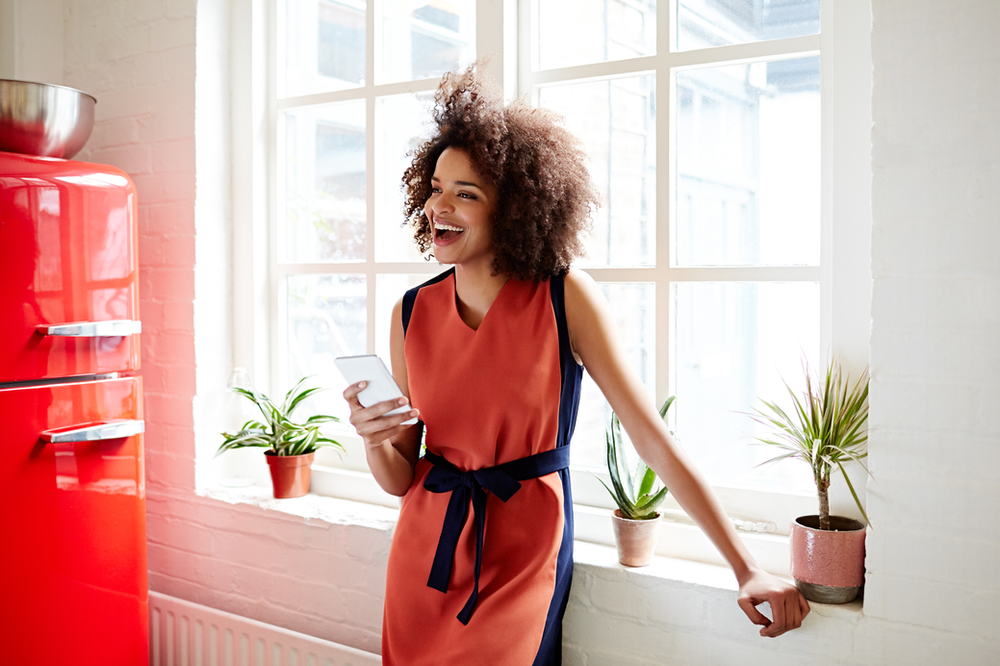Unleash the power of color in your marketing strategy! Discover how color psychology influences consumer behavior and learn how to use it effectively in your marketing campaigns. It’s not just black and white – it’s a whole rainbow of opportunity!

Introduction
The Importance of Color in Marketing
Understanding Color Psychology
How Different Colors Influence Consumer Behavior
- Red
- Blue
- Green
- Yellow
- Black
- White
- Orange
- Pink
- Purple
- Brown
- Grey
Practical Tips for Using Color Psychology in Marketing
Case Studies of Effective Use of Color Psychology in Marketing
Conclusion
Introduction
Hello, color enthusiasts! Welcome to the vibrant world of color psychology in marketing. If you thought marketing was all about words and numbers, prepare to have your mind painted with a new perspective.
Today, we’re diving into the technicolor pool of color psychology.
So, buckle up and put on your rainbow-tinted glasses because we’re about to embark on a chromatic journey that’s as fun as splashing around in a paint factory but with the added bonus of boosting your marketing game.
The Importance of Color in Marketing
Colors are like the silent cheerleaders of your brand. They wave their pom-poms in the background, subtly influencing how your audience perceives your brand.
But don’t let their silence fool you. These cheerleaders have a megaphone and are not afraid to use it.
Studies show that color can effectively increase brand recognition by up to 80%. That’s right, 80%! That’s like walking into a party and having four out of five people recognize you because of your signature color. Now, who wouldn’t want that kind of recognition?
It’s not just about recognition. Colors also play a crucial role in conveying your brand’s personality.
Are you a fiery red, bursting with energy and passion? Or perhaps a calming blue, exuding trust and reliability? Maybe you’re a vibrant yellow, radiating positivity and warmth.
Whatever your brand’s personality, there’s a color (or a palette of colors) that can express it.
Understanding Color Psychology
Now, let’s get into the nitty-gritty of color psychology. Color psychology is like the secret language of colors. It’s how colors communicate with us on a subconscious level, stirring our emotions, influencing our thoughts, and swaying our behavior.
Each color has its own little whisper, nudging our subconscious in different directions.
But here’s the fun part: this language isn’t universal. The way we interpret colors can vary based on personal experiences, cultural differences, and even the context in which we see them.
So, while red might signal danger in one context, it could represent love in another.
It’s like being at a color masquerade ball, where each color can wear different masks depending on the situation.
How Different Colors Influence Consumer Behavior
Now that we’ve dipped our toes into the vibrant pool of color psychology let’s dive deeper and explore how different colors can influence consumer behavior.
Remember, these are general interpretations and can vary based on the factors we discussed earlier. So, let’s put on our snorkeling gear and dive right in!

Red
Red, the color of fire and love, is like the life of the party. It’s bold, energetic, and a little bit sassy. It’s the color that turns heads and makes hearts beat faster. In the language of color psychology, red represents passion, excitement, and urgency.
In the world of marketing, red is a powerhouse. It’s the color that grabs attention and provokes action.
It’s the color that says, “Stop! Look here!” That’s why you’ll often see red used in ‘Sale’ signs in stores or ‘Buy Now’ buttons online. They’re red for a reason – to get your heart racing, your adrenaline pumping, and your hands reaching for your wallet.
But red isn’t just about sales and urgency. It’s also the color of passion and love. Think of the red heart symbol or red roses on Valentine’s Day.
Brands that want to evoke strong emotions often turn to red. Coca-Cola, for example, uses red in its logo to create a sense of excitement and appeal.
However, like a potent hot sauce, too much red can be overwhelming. It can come off as aggressive or even alarming. That’s why it’s important to use red wisely. Balance it with cooler colors, or use it sparingly as an accent color.

Blue
Blue is the color of the sky and beautiful sea. It’s often considered the cool kid on the color block. It’s like that reliable friend who’s always there for you, offering a sense of calm and stability amidst the chaos. It’s the color that says, “Don’t worry, I’ve got your back.”
Blue is associated with trust, peace, and stability in color psychology. It’s the color that makes us feel secure and at ease, like a comforting blanket on a cold night.
It’s no wonder that when we’re feeling blue, we’re encouraged to take a walk under the blue sky or by the blue sea to lift our spirits.
In marketing, blue is a popular choice for businesses wanting to convey trust and reliability. It’s the go-to color for brands that want to communicate their dependability and commitment to customers.
Think about it. When you see a bank or an insurance company with a blue logo, doesn’t it make you feel a bit more secure? That’s blue doing its magic. Companies like Visa, Ford, and Samsung have all harnessed the power of blue to build trust and loyalty among their customers.
Tech firms, too, often opt for blue to convey a sense of innovation and reliability. Facebook, Twitter, and LinkedIn – they all sport shades of blue, creating a sense of familiarity and trust among their users.
But here’s a word of caution: too much blue can come off as cold and unemotional.
It’s like a robot trying to tell a joke – it just doesn’t hit the mark. So, while blue can be an excellent color for building trust and stability, it’s important to balance it with warmer hues to add a touch of warmth and emotion.

Green
Green is the nature lover of the color family. It’s all about growth, harmony, and freshness. It’s the color of health, tranquility, and environment.
In marketing, green is often used by businesses related to health, nature, and eco-friendliness.
It’s also used to induce a sense of calm and relaxation. But remember, the wrong shade of green can evoke feelings of sickness or envy.
So, choose your green wisely!

Yellow
Yellow is the eternal optimist of the color spectrum. It’s bright, cheerful, and always looking on the sunny side of life. It’s the color of happiness, positivity, and energy.
In marketing, yellow is used to grab attention and evoke a sense of optimism and cheerfulness. Think of those golden arches of McDonald’s – they’re yellow for a reason!
Be careful because sometimes yellow can be overwhelming and can even cause anxiety. So, use it sparingly and in the right context!

Black
Black, the color of the night sky, and the little black dress is the James Bond of colors. It’s sleek, powerful, and carries an air of mystery. It’s the color that says, “I mean business.” In color psychology, black represents sophistication, elegance, and power.
In marketing, black is the power player. The color conveys a sense of exclusivity, luxury, and high value. Luxury brands often use it to create a sense of sophistication and elegance.
Think of Chanel with its iconic black logo or Louis Vuitton with its high-end black packaging. These brands use black to suggest that their products are not just purchases but investments.
Black is also the color of strength and authority. Brands that want to convey a sense of power and control often use black. Consider Nike, which uses black in its logo to suggest strength and determination.
So, it’s all about how you use it. Balance black with lighter colors to soften its intensity, or use it sparingly to create a sense of depth and contrast.

White
White is the peacekeeper of the color family. It’s pure, clean, and always aiming for harmony. It’s the color of simplicity, purity, and innocence.
In marketing, white conveys a sense of cleanliness, simplicity, and space. Think of Apple’s minimalist design aesthetic.
Too much white can come off as sterile or boring. So, make sure to pair it with some vibrant colors!

Orange
Orange, the vibrant blend of red’s passion and yellow’s joy is the extrovert of the color world. It’s friendly, enthusiastic, and always ready for a good time. It’s the color that shouts, “Let’s have fun!” In color psychology, orange represents creativity, adventure, and enthusiasm.
In marketing, orange is the color of attention without the intensity of red. It’s the color that says, “Hey, look over here!” but in a friendly, inviting way. It’s often used to express fun, draw attention, and stimulate appetites or senses. Think of Nickelodeon with its playful and youthful vibe or Fanta with its fun and refreshing image.
Orange isn’t just about fun and games. It’s also the color of change, representing the changing seasons and the idea of transition.
Brands that want to convey a sense of change or innovation often use orange. Amazon, for example, uses orange in its logo to suggest a sense of excitement and anticipation.
It’s important to remember that orange can also signal caution, like a traffic cone or a warning sign. So, consider the context in which you’re using it. Too much orange can be overwhelming and may even trigger feelings of caution or warning.

Pink
Pink is the sweetheart of the color spectrum. It’s gentle, romantic, and full of charm. It’s the color of love, femininity, and compassion. In marketing, pink is often used to target a female audience and evoke feelings of warmth and nurture.
Think of Barbie or Victoria’s Secret. But be careful, overuse of pink can come off as immature or frivolous. So, use it thoughtfully!

Purple
Purple, the blend of red’s passion and blue’s tranquility, is the royal of the color family. It’s luxurious, mysterious, and has a knack for the spiritual. It’s the color that whispers, “There’s more than meets the eye.” In color psychology, purple represents royalty, luxury, and wisdom.
In marketing, purple is the color of luxury and high quality. It’s the color that says, “You deserve the best.” It’s often used by brands that want to convey a sense of luxury, sophistication, and premium quality.
For example, Cadbury’s royal purple packaging that suggests a rich, indulgent chocolate experience. Or consider Hallmark, which uses purple to evoke a sense of magic and wonder in its storytelling.
Purple is the color of creativity and imagination. Brands that want to stimulate creativity or convey a sense of innovation often use purple.
Yahoo, for example, uses purple in its logo to suggest a sense of creativity and innovation.
You should keep in mind that purple can also evoke feelings of melancholy or frustration. The wrong shade of purple can come off as gloomy or even pretentious.
So, choose your shade wisely. A light, vibrant purple can evoke feelings of romance and nostalgia, while a deep, rich purple can convey a sense of luxury and sophistication.

Brown
Brown is the reliable, down-to-earth member of the color family. It’s natural, wholesome, and comforting. It’s the color of earth, stability, and reliability. In marketing, brown is often used by food and agriculture businesses to evoke a sense of naturalness and wholesomeness. Think of UPS or Whole Foods.
But be careful, brown can also be seen as dull or boring, so pair it with more vibrant colors!

Grey
Grey, the perfect blend of black’s depth and white’s purity, is the neutral, balanced member of the color family. It’s calm, conservative, and carries a sense of formality. It’s the color that says, “Let’s keep things balanced.” In color psychology, grey represents neutrality, balance, and sophistication.
In marketing, grey is the color of sophistication and modernity. Tech companies and car manufacturers often use it to convey a sense of sleekness, precision, and cutting-edge technology.
As example, Apple with its minimalist, grey-themed product designs or Mercedes-Benz with its sleek, grey cars that scream luxury and sophistication.
Grey is also the color of practicality and timelessness. Brands that want to convey a sense of longevity and reliability often use grey.
Consider The New York Times, which uses a black and white (grey-scale) color scheme to suggest a sense of authority and tradition.
Remember that too much grey can come off as lifeless and dull. It’s like a cloudy day that’s begging for a ray of sunshine. So, don’t shy away from adding some color to liven things up. A pop of energetic color against a grey background can create a striking contrast and make your design stand out.
Practical Tips for Using Color Psychology in Marketing
Now that we’ve explored the colorful world of color psychology, let’s get practical. How can you use this knowledge in your marketing strategy? Here are some tips to get you started:
- Know Your Audience: Different cultures interpret colors differently. So, make sure you understand your audience’s cultural context before deciding on your color palette.
- Align Colors with Brand Personality: Your brand’s personality should guide your color choices. Are you a fun, youthful brand? Bright, vibrant colors might be your best bet. Are you a luxury brand? Darker, richer colors might work better.
- Consider the Context: The context in which your audience sees your colors can influence their perception. So, consider where and how your audience will interact with your brand.
- Test, Test, Test: The best way to know if your color choices are working is to test them. Use A/B testing to see which colors resonate best with your audience.
- Don’t Rely Solely on Color: While color is important, it’s just one piece of the puzzle. Make sure your messaging, imagery, and other design elements align with your brand and marketing goals.
Case Studies of Effective Use of Color Psychology in Marketing
To illustrate the power of color psychology in marketing, let’s look at some real-world examples:
- Coca-Cola: The brand’s iconic red color evokes excitement, passion, and energy. It’s no wonder Coca-Cola is often associated with happiness and fun.
- Tiffany & Co.: The luxury jewelry brand’s distinctive “Tiffany Blue” color conveys elegance, sophistication, and exclusivity.
- Starbucks: The coffee giant’s green logo communicates growth, freshness, and a sense of calm – perfect for a company that prides itself on its commitment to sustainability and quality.
Conclusion
Color psychology is a powerful tool in marketing. It’s like the secret sauce that can add flavor to your brand and make it more appetizing to your audience.
But remember, while color can influence how your audience perceives your brand, it’s not a magic bullet. It should obviously be part of a broader marketing strategy that includes compelling messaging, strong design, and a deep understanding of your audience.
So, go forth and color your marketing world!
Thanks for reading
Laurence Zimmermann
More information about our Web Design services and pricing here.
Related articles
Boost Your Home Based Business: Effective Tips Revealed
80 Critical Business Mistakes To Avoid If You Want To Succeed
Word Of Mouth Marketing: Amplify Your Brand
Customer Loyalty: The Key To Business Growth
25 Irresistible Lead Magnet Ideas to Help You Attract More Customers
Source: fractalmax.agency




